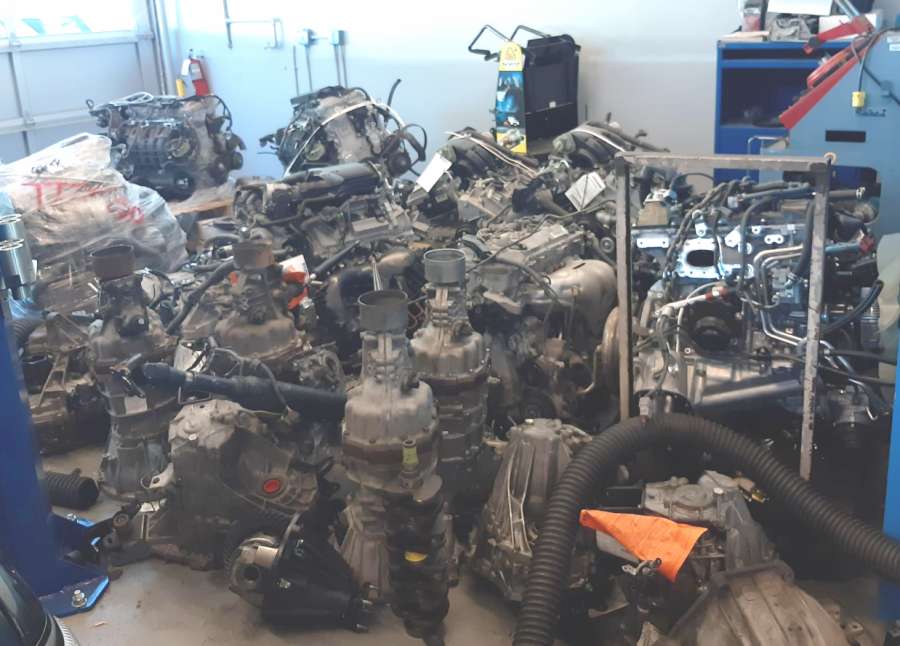Automotive facility cramped early in semester
Daniel Hernandez / The Advocate
Used engine equipment sits packed in the Automotive Technology Building in the midst of the department’s efforts to organize equipment this semester.
Feb 19, 2020
The automotive department finds itself in disarray as the semester begins with learning equipment scattered throughout the building, while surprisingly, new storage containers are not being used to their fullest capacity.
On the first day of the spring semester, one forklift carried in three 40-foot shipping containers separately into the storage lot of the Automotive Technology Building.
For the installation to be possible, automotive instructional assistant Jim Gardner shuffled 20 instructional cars into the automotive services shop.
“Most cars ran fine, but some had to be pushed in,” Gardner said.
But due to the building’s tight space, the lack of adequate size and utilities to keep engines and transmissions in the rebuild room forces the surplus to sit on the shop’s floor.
Kyle Endow, automotive technology major and former student of the engine rebuilding course, said, “We’re in the process of reorganizing. It could be better, I’d like to see (the shop) organized. I think we’ll get to that point eventually.”
Currently, automotive instructor Lucile Beatty, among other automotive professors, are discussing plans for an organization system to safely and effectively store equipment inside the containers.
Most engines blocks and transmissions need to sit on stands and pallets, respectively, to be stored on shelves and require a ramp for fluid transitions in and out of the containers—which the department does not have enough of.
Engine service repair and automotive drivetrain courses rotate every semester; therefore, each container will be designated to hold separate instructional components.
Over the fall semester, construction was done to push back the north fence of the AT building, severing the path that connected the Early Learning Center to the Computer Technology Center. In turn, the extra space made it possible to keep the storage containers permanently in their place, for the time being.
These containers, supplied by the department’s sponsorship with Toyota, are customized with two doors on the side walls to lie flat against the fence for quick and efficient mobility.
Information on the cost for the containers and labor was not available at the time of publication.
New engines and the latest production cars are supplied throughout the semester ever since the department signed the deal with Toyota last year.
Fresh teaching aids allow students to work with factory-new engines each semester. The more engines they have per class encourages the opportunity for students to have a more intimate and thorough hands-on learning experience.
According to Beatty, used engines are periodically sent to be recycled and new ones are received.
Endow said, “These (cars) are all 2017, 2018 models. By the time that we graduate and are out in the field, those will be coming in for servicing. It’s nice to be educated about something that we’re going to see by the time we graduate and not by something that’s 15 years old that we may not repair.”
Four weeks into the semester, Beatty foresees the containers to be organized with ramps and shelving. She also expects the shop floor to be cleared of overstocked engines and transmissions by the summer session.



